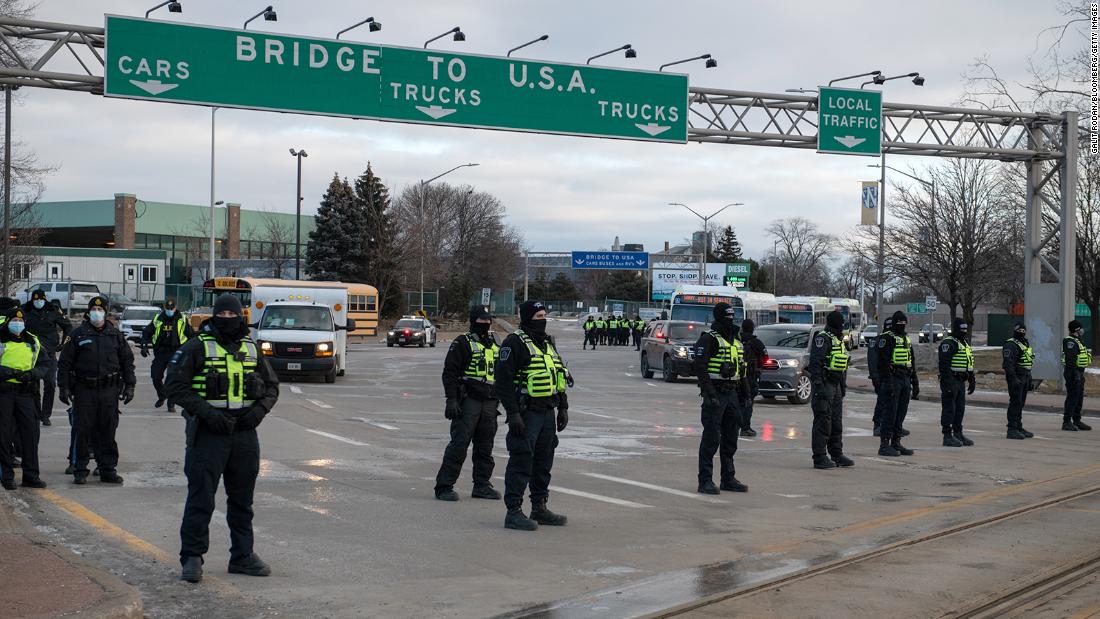And the Ambassador Bridge, which separates the US and its neighbor to the north, may be the most economically important one-and-a-half miles of roadway in the Western Hemisphere. Until this past week it got very little attention for the crucial role it plays in the economies of the two nations.
A total of $664 billion worth of goods moved between the two countries last year, according to US Commerce Department data. The state of Michigan estimates 30% of the total moved over the privately-owned Ambassador Bridge linking Detroit and Windsor, Ontario. An estimated 10,000 commercial vehicles cross the bridge daily.
But not this past week.
The fact is, the economies of Canada and the United States are closely intertwined in ways citizens of both probably don’t realize or take for granted.
Since goods generally move across the border with limited tariffs or other taxes, factories on one side of the border depend on suppliers from the other. Experts say there isn’t a car built in the United States without Canadian parts, and vice versa.
In 2021, the United States imported more than one million completed vehicles from Canada, worth about $25 billion. Canada, with roughly one-ninth the population of the United States, imported 750,000 US vehicles, worth about $14 billion in the same time frame, according to data from research firm IHS Markit.
“Essentially, automotive supply chains treat that border as it would a state border,” said Bernard Swiecki, director of research at the Center for Automotive Research, a Michigan think tank. “Financially speaking, that international border might as well not be there.”
Factories as far away as Toyota plants in West Virginia, Kentucky and Alabama, as well as a Ford plant producing Super Duty pickups in the Cleveland suburb of Avon Lake, Ohio, were forced to temporarily halt or reduce their operations. So did a plant in the Toronto suburb of Brampton, Ontario which builds Chrysler 300s, Dodge Chargers and Dodge Challengers.
The Great Lakes separating the eastern United States and Canada limit the number of places where it’s possible to cross the border by land between the eastern portion of the two nations. While there’s a tunnel between Detroit and Windsor, it’s generally closed to commercial traffic because it doesn’t have the customs facilities the bridge has.
Another bridge links Port Huron, Michigan, and Sarnia, Ontario, but the route involves a 150-mile detour, and it’s had its own share of protests this week, making it risky for trucks to try to cross the border there.
Rising 152 feet above the Detroit River, the 92-year-old Ambassador Bridge is only two lanes wide in either direction.
An alternative bridge is under construction roughly a mile away, but it isn’t due to open for at least two more years. It will have three lanes in each direction and be named for Gordie Howe, the Canadian-born hockey superstar who played for the Detroit Red Wings.
While the auto industry got most of the attention this week due to the concentration of the industry in Detroit and Windsor, it’s not the only industry depending on the bridge.
“A lot of manufacturing, a lot of goods, depend on the bridge. It’s not just autos,” said Stephanie Brinley, principal analyst with IHS Markit.
“Our supply chain is pretty fragile right now,” said Brinley. “We don’t need another kink in the works.”
— CNN’s Miguel Marquez contributed to this report.

